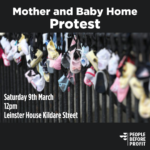The UN environmental agency has published yet another dire report about the gap between the appropriate response to global warming and the actual response so far. Currently, the combined pledges of every country in the world, IF adhered to, will take us to 2.8°C.
A key thing to put this in perspective is that scientists and other experts have told us that 1.5°C is the warming that we desperately need to stay under, to have even a chance of avoiding worldwide catastrophe. At 1.5°C, it becomes extremely likely that we will hit so-called “climate tipping points” where climate change begins to cause EVEN MORE climate change, in a reinforcing cycle that we can’t control, only mitigate.
The agency also says that keeping below 1.5°C warming is still barely possible. But, only if every country on Earth (ESPECIALLY the richest ones, who are also the biggest emitters) immediately commits to radical, sweeping societal changes and massive spending. This is an incredibly unlikely outcome. Worldwide emissions are at an all-time high. NATO members and other countries are ramping up their military spending when the military-industrial complex is already the world’s single biggest emitter.
When climate change is being discussed, the consequences tend to be described in abstract ways. “Higher likelihood of extreme weather events”. “Ecosystem collapse”. These are not descriptions of the human cost. It is important that we understand what we have effectively ALREADY been condemned to. To that end, let’s consider just one of the many, many ways that climate change can hurt us. Heatwaves.
At 2°C of warming, heatwaves will not only be hotter – hotter even than the boiling summer we felt this year – they will be more frequent. And that frequency is just as dangerous, if not even more so, than the magnitude itself.
Heatwaves mean water shortages, like multiple countries faced this year. That’s because the heat means no rainfall to fill our reservoirs and water tanks, and the water we DO have evaporates.
Water shortages mean crop failures. No living thing can live without water, and that includes the plants we grow as food.
Crop failures mean famine. Famine means death. We’re seeing this already in the Horn of Africa, which is undergoing drought and famine on a scale not seen since Somalia’s famine in 1992, when over 220,000 people died. This has come about due to the failure of five rainy seasons in a row, an event not seen in 40 years, with a predicted 6th failure to come.
This will only get worse and more widespread with time. It is one thing for a single country to experience crop failure, it is another if EVERY country experiences it simultaneously.
To give us a sense of how many lives are at stake, cast your mind back to the Great Famine. Ignoring those who died while fleeing the country as refugees, around one million people died. 12.5% of eight million, roughly Ireland’s population at the time. Africa’s total population is roughly 1.419 billion. 12.5% of that is over 177 million people. 177. Million. People.
A number that would leave the body count of both World Wars combined in the dust. And this is a fraction of the real number, as I have not even begun to account for the populations of Asia, Europe, the Americas, Australia, nor for all the other ways that global warming can kill, maim, ruin and destroy people.
Such as more powerful and more frequent hurricanes, cyclones, other extreme (and lethal) weather. Such as fires, be they on buildings or in nature. Such as submerging cities of millions, leaving them homeless. Such as acidification of the oceans and the death of fish. Such as magnifying every other crisis (health, housing, cost of living).
The dreadful consequences of climate change, especially to Africa, are not a recent realisation. Back in 2009, at COP15 in Copenhagen, the lowest climate target that could be agreed to at the time was 2°C. In attendance was Lumumba Di-Aping, a Sudanese negotiator for the G77 (a group of at-the-time 77 developing nations). After the 2°C goal was set, he stood with tears in his eyes and said:
“We have been asked to sign a suicide pact…. It is unfortunate that after 500 years plus of interaction with the West, we’re still considered ‘disposable’.”
The only appropriate response to this likely future is not techno-optimism or liberal trust in markets to eventually sort things out. It is a change in perspective, a firmer, more urgent and more radical rejection of the system which has brought us to this point, the system which has failed not by a sliver but by a gaping chasm, a wide and catastrophic margin. The system which, like a fire, mindlessly consumes and devours, as is its nature. That system, if allowed to, will take us beyond the deaths of hundreds of millions and a collapse of living standards to our very extinction. That system is neoliberal capitalism.
If it doesn’t burn, then we will. Every tenth of a degree counts.












